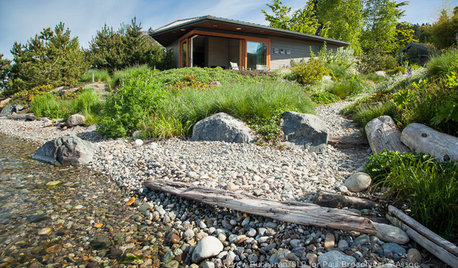Michigan Lawn Plan
jarvinen
12 years ago
Related Stories

FRONT YARD IDEASBefore and After: Front Lawn to Prairie Garden
How they did it: Homeowners create a plan, stick to it and keep the neighbors (and wildlife) in mind
Full Story
REMODELING GUIDESOne Big Happy Expansion for Michigan Grandparents
No more crowding around the Christmas tree. Friends and extended family now have all the elbow room they need, thanks to a smart addition
Full Story
BEFORE AND AFTERSSee 6 Yards Transformed by Losing Their Lawns
Wondering whether a turf lawn is the best use of your outdoor space? These homeowners did, and they found creative alternatives
Full Story
GARDENING GUIDESHow to Prep Your Ground for a Healthy New Lawn
Seed or sod that falls on weedy, lumpy soil is a wasted effort. Follow these steps to ensure that your new lawn will thrive
Full Story
INSPIRING GARDENSLawn Gives Way to a More Natural Lakeside Garden
Meadow grasses, beach pebbles and driftwood replace turfgrass in a nature-friendly landscape on Lake Washington’s shore
Full Story
VACATION HOMESHouzz Tour: Historical Details Charm in a Lakeside Michigan Home
Victorian touches harmonize with contemporary amenities in this inviting vacation home with its own dock on the lake
Full Story
ROOM OF THE DAYRoom of the Day: Eclectic and Casual in a Michigan Great Room
Distressed finishes and a mix of styles make this newly built great room fit for a laid-back family
Full Story
HOUZZ TOURSHouzz Tour: Family-Friendly Coastal Style in Michigan
Three generations share a chic and comfortable home on a lake
Full Story
HOUZZ TOURSHouzz Tour: Country Meets Contemporary in a Michigan Getaway
Soothing neutrals, casual furnishings and nearby Lake Michigan offer a Chicago couple and their guests a respite from city chaos
Full Story
VACATION HOMESHouzz Tour: More Room to Relax in a Michigan Retreat
Tired of cramming their family and friends into a compact space, a family adds a guesthouse and an addition big enough for a crowd
Full Story





Kimmsr
jarvinenOriginal Author
Related Professionals
Harrison Landscape Architects & Landscape Designers · Lake Oswego Landscape Architects & Landscape Designers · Clermont Landscape Contractors · Goodyear Landscape Contractors · Mastic Beach Landscape Contractors · Saint George Landscape Contractors · South Lake Tahoe Landscape Contractors · West Chicago Landscape Contractors · Suisun City Landscape Contractors · Santa Paula Swimming Pool Builders · Annapolis Fence Contractors · Corona Fence Contractors · Salida Fence Contractors · La Mirada Fence Contractors · Washington Fence ContractorsjarvinenOriginal Author
Kimmsr
dchall_san_antonio
jarvinenOriginal Author